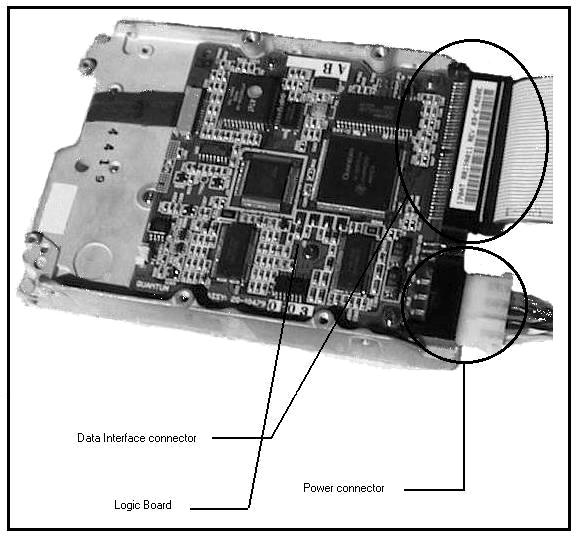|
Connectors and Jumpers
There are several different connectors and jumpers in a hard disk which are used to configure the hard disk and connect it to the rest of the system. The number and types of connectors on the hard disk depend on the data interface it uses to connect to the system, the manufacturer of the drive, and any special features that the drive may possess.
Instructions for setting common jumpers are usually printed right on the drive. Hard disk drives use a standard, 4-pin male connector plug that takes one of the power connectors coming from the power supply. This leads 4-wire plastic connector provides +5 and +12 voltage to the hard disk
There are two type of interfaces form which usually modern hard disk drives use one of them:
- IDE/ATA: It has a 40-pin rectangular connector.
- SCSI: A 50-pin, 68-pin, or 80-pin D-shaped connector. All these three pin number represent a different type of SCSI disk such as:
- A 50-pin connector means the device is narrow SCSI.
- 68 pins means wide SCSI.
- 80 pins mean wide SCSI using single connector attachment (SCA).

The connectors on hard disk drives are generally in the form of a 2xN rectangular grid of pins (where N is 20, 25, 34 or 40 depending on the interface). Most of the current SCSI interface connectors are keyed to prevent incorrect insertion because they are D-shaped, this is not always the case for other interfaces.
For this reason, it is important to make sure that the cable is oriented the correct way before plugging it in. The cable has a red stripe to indicate wire 1 and the hard disk uses markers of one form or another to indicate the matching pin 1.
|


